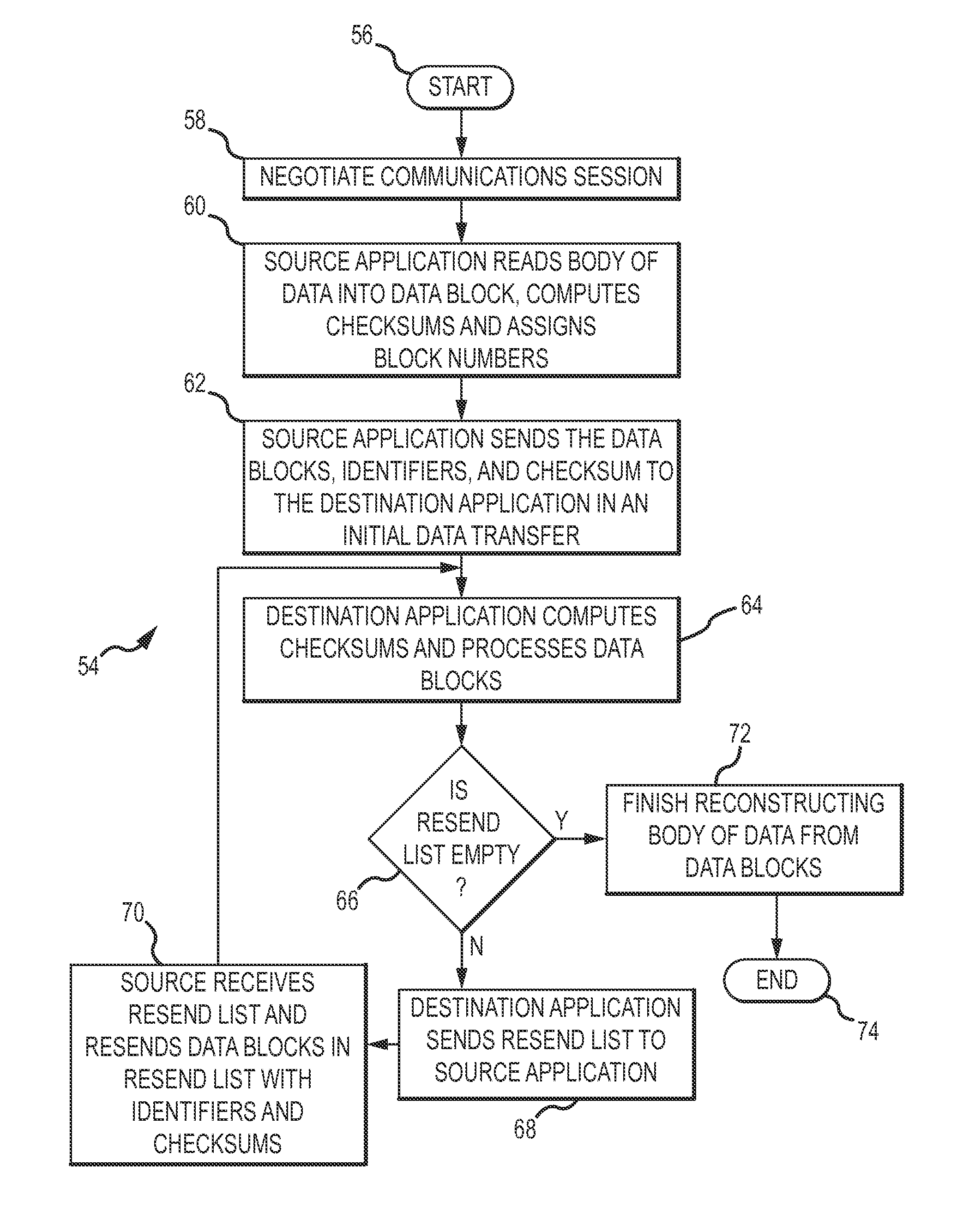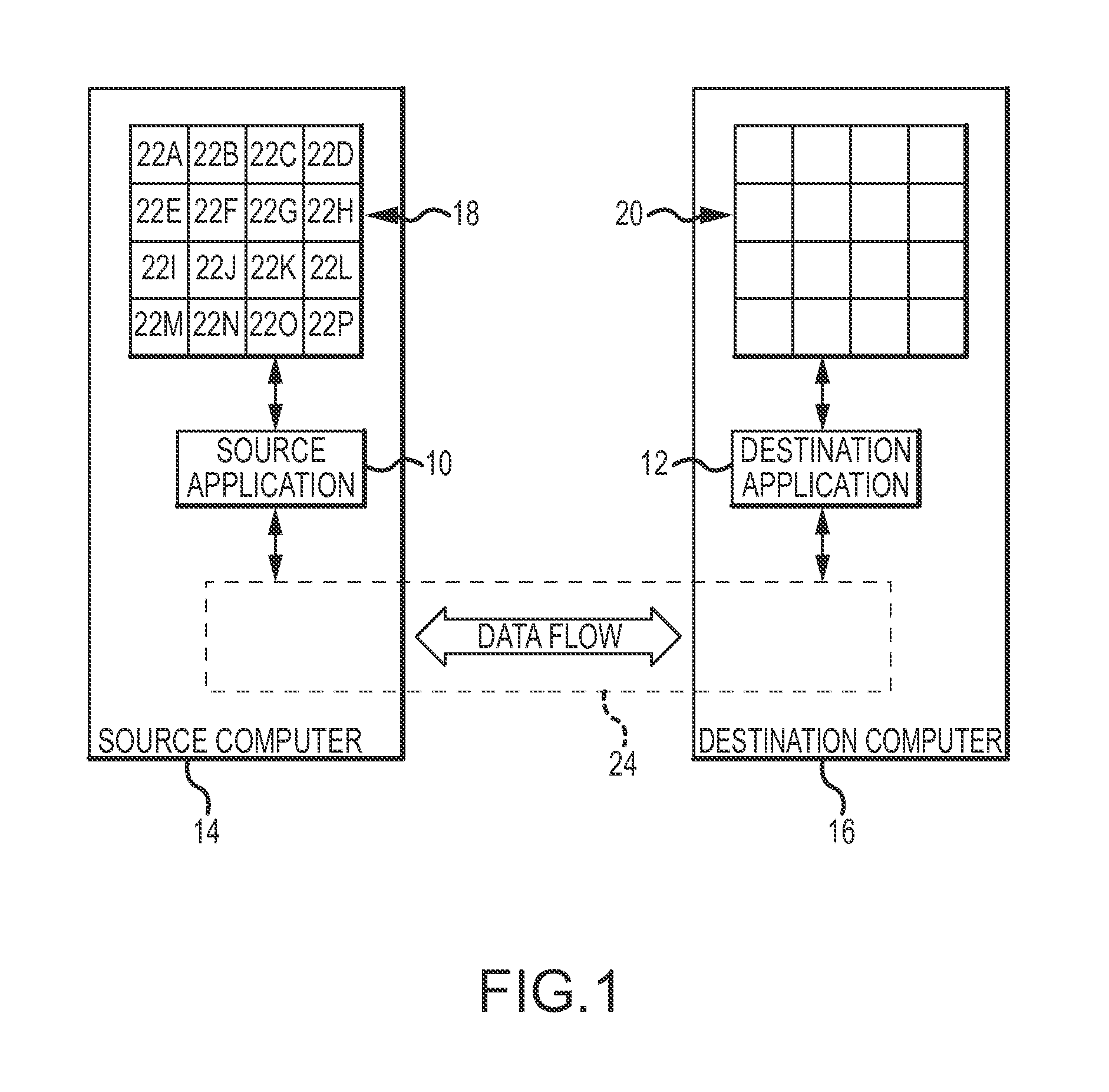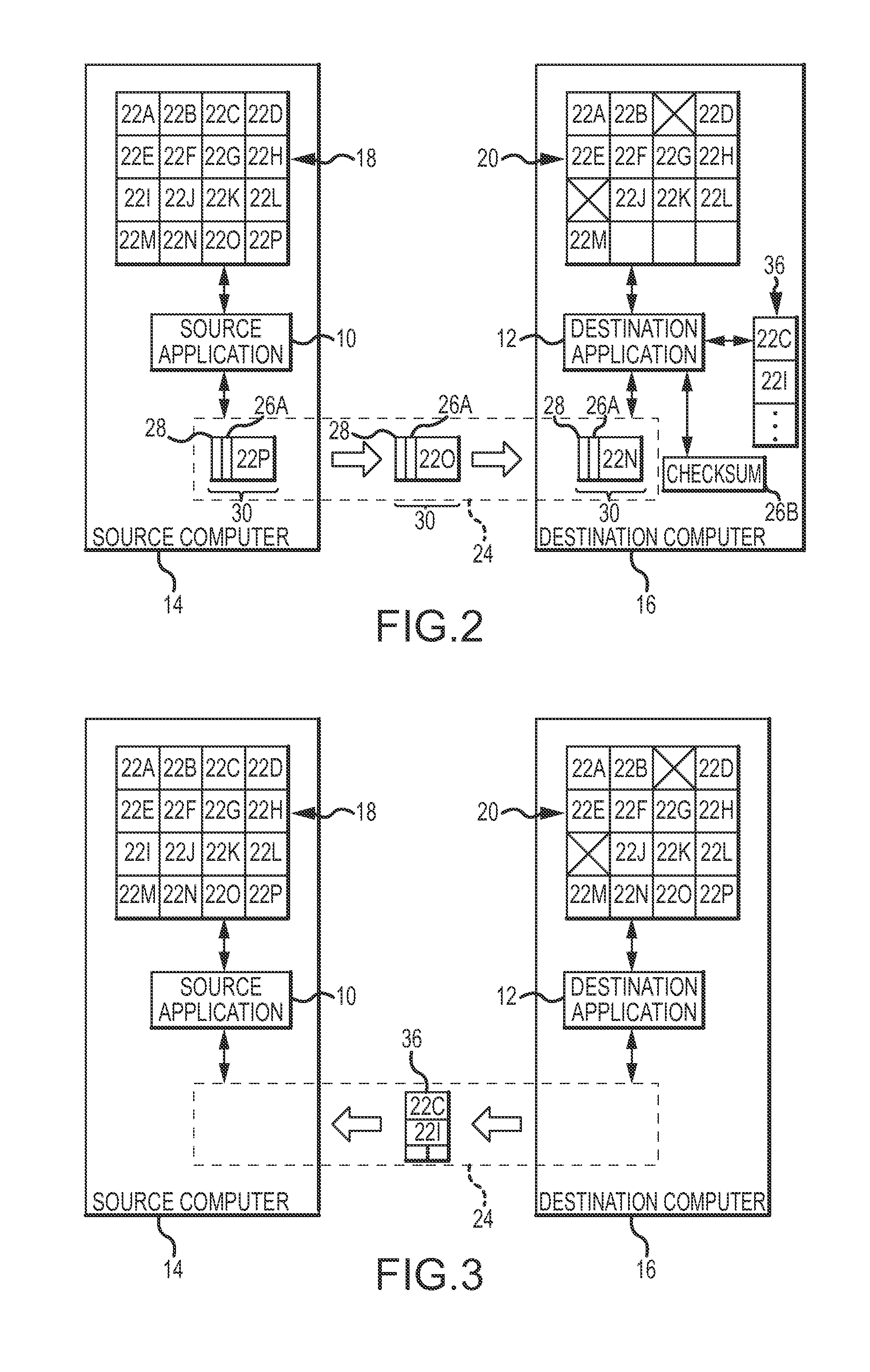Application recovery from network-induced data corruption
a network-induced data and application recovery technology, applied in the field of computer communication, can solve the problems of network noise and signal interference, one or more bits in a packet to change, and introduce an error in the data intended to be transferred, so as to maximize the performance benefit, increase data throughput, and incur additional processing overhead
- Summary
- Abstract
- Description
- Claims
- Application Information
AI Technical Summary
Benefits of technology
Problems solved by technology
Method used
Image
Examples
Embodiment Construction
[0018]Communication errors between a source computer application (“source application”) and a destination computer application (“destination application”) which Transmission Control Protocol (TCP) failed to detect are detected and corrected at the application level in an efficient manner.
[0019]A source application 10 and a destination application 12 which implement the present invention are shown in FIGS. 1-5. The source application 10 is executed on a source computer 14, and the destination application 12 is executed on a destination computer 16. The applications 10 and 12 coordinate the copying of data from a source disk 18, or other mass storage device of the source computer 14, to a destination disk 20, or other mass storage device of the destination computer 16. The data on the disk 18 shown in FIG. 1 is collectively represented by data blocks 22A-22P. The data blocks 22A-22P are not necessarily discreet data entities, such as files, but rather represent same size data units th...
PUM
 Login to View More
Login to View More Abstract
Description
Claims
Application Information
 Login to View More
Login to View More - R&D
- Intellectual Property
- Life Sciences
- Materials
- Tech Scout
- Unparalleled Data Quality
- Higher Quality Content
- 60% Fewer Hallucinations
Browse by: Latest US Patents, China's latest patents, Technical Efficacy Thesaurus, Application Domain, Technology Topic, Popular Technical Reports.
© 2025 PatSnap. All rights reserved.Legal|Privacy policy|Modern Slavery Act Transparency Statement|Sitemap|About US| Contact US: help@patsnap.com



